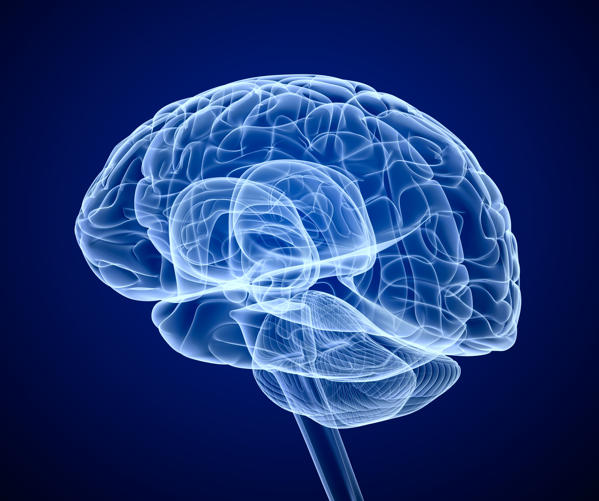
To many, bullying is still considered a “soft” form of abuse because there are no visible injuries. After all, only our feelings are hurt.
It has been well-documented that victims of bullying can experience serious emotional and psychological difficulties. That is now a known fact. New neurobiological research is discovering that bullying physically alters the developing brains of kids. The following are five studies detailing how the brain processes become derailed when an individual is subjected to continual bullying.
1. Rockefeller University - Mice StudyA mice study, conducted at Rockefeller University, examined the brains of mice that had been subjected to bullying (Don't ask me how they did that. I have no idea how... but it is interesting nevertheless).
The researchers discovered that genes became more active, allowing greater amounts of the hormone, vasopressin, to be released into the brain area. The changes in the neuroendocrine systems affect adaptive social behaviors. Bullied mice would not socialize with nonthreatening mice, would freeze in place, and frequently displayed fearful and anxious behavior. In humans, alterations in the components of the neuroendocrine systems are linked to depression, social phobias, and other disorders. The findings of this study seem to indicate that bullying could produce enduring social trauma at the molecular level.
Neuroscientist, Martin Teicher, conducted a study of 63 young adults who were victims of verbal bullying. Teicher found deviations in the corpus callosum, a broad band of nerve fibers which connect the left and right hemispheres of the brain, allowing communication between the two halves of the cerebellum.
With the subject participants, neurons in the corpus callosum were found to have smaller amounts of the myelin sheathing that helps enhance brain cell communication. These abnormalities may hamper an individual’s ability to process events occurring around them and respond accordingly. Victims of bullying frequently have problems with memory, concentration, and attention. Corpus callosum abnormalities may contribute to these cognitive difficulties.
3. Vaillancourt’s Long-term Study
Tracy Vaillancourt, a psychologist at the University of Ottawa, has been following teenagers, including those that have been regularly humiliated and ostracized by their peers, to investigate whether there were structural differences when compared with others.
Every six months, the teens’ cognitive functioning is evaluated and their brains are scanned using magnetic resonance imaging (MRI) to assess damage to the brain, specifically the hippocampus, which is involved in memory formation. Vaillancourt’s findings suggest that bullying does impair normal brain development. Her results include...
- Cortisol Level Abnormalities: In 2008, Vaillancourt’s discovered higher levels of cortisol, the stress hormone, in boys who had been bullied, and significantly lower levels of cortisol, in bullied girls. When an individual is experiencing “fight or flight” responses, blood glucose is deterred from the hippocampus to the muscles. The hippocampus is especially sensitive to chronic stress, and when there is an excess amount of this cortisol in the brain, the abilities to create new memories and access existing ones are compromised. It has not been determined why bullied girls have abnormally low levels of cortisol, but it has been speculated, that the body has learned to make less cortisol, because of the chronic stress, experienced by the girls.
- Anomalies in the Corpus Callosum: Vaillancourt discovered abnormalities in the nerve fiber bands which indicates that communication between the two hemispheres may be impaired. Scientists have shown that bullied individuals often have cognitive deficits, and score lower on verbal memory tests, and have less ability to focus on and complete tasks successfully. The irregularities in the corpus callosum could account for this cognitive impairment.
A neuroscientist at the Chicago Medical School, Daniel Peterson, documented that just one session of bullying altered a bullied rat’s brain. When examining the brain, Peterson and his colleagues, verified that while new brain cells were still being produced at a normal rate in the hippocampus, a large percentage of the new cells were dying off before fully maturing. Peterson speculates that with just a single episode of bullying, brain cell survival will return to its natural state. Should bullying persist for lengthy periods, producing continual stress, brain cell survival would continue to diminish.
5. Radua Study
Radua compared the brains of children and adults who had histories of maltreatment with those who did not. Using a neuroimaging technique, Radua discovered that those participants, who had been exposed to maltreatment, had significantly lower volumes of gray matter in numerous brain areas.
Gray matter is composed of neuronal cells and unmyelinated axons and functions mainly in the processing of information. Radua concluded that stressors in childhood can cause enduring physiological and neurobiological changes to brain structure.
Parents know that bullying causes serious emotional damage to the victimized child, but not much has been known about the brain structure of victimized children. Evidence is continuing to mount that indicates the harm is far from just skin deep. Bullying, physically alters developing brains, and needs to be taken seriously by parents, teachers, and schools.
What can you do to help protect your kids again cyberbullying? Check out uKnowKids!
uKnowKids is an amazing tool for parents that are working hard to keep their kids from falling victim to cyberbullying.
uKnowKids is also a terrific tool for parents hoping to keep their kids from being a bully.
You can learn more at uKnowKids.com.


